Starting from 1 March 2018 manufacturers and importers of electrical and electronic equipment into the Eurasian Economic Union are required to comply with the adopted Technical Regulation (TR) restricting the content of hazardous substances in such equipment (“the EEU RoHS TR").
The adopted TR applies to household electrical equipment and devices (the full list is provided in Annex 1 to the TR), such as equipment intended for cooking, food processing, food storage, cleaning of premises, laundry washing and air conditioning. It also applies to chargers, power supplies and voltage regulating equipment as well as extension cables.
The TR also applies to IT and computing equipment, including monitors, servers, printers, etc. as well as telecom and office equipment.
The TR applies to electrical instrument (hand-held or moveable electrical machinery and lighting equipment.
The TR applies to cables and wires intended to be used at the nominal voltage not exceeding 500 V AC and/or DC, except fiber-optical cables.
The TR does not apply to:
- Electrotechnical and radio equipment intended to be used during nominal voltage exceeding 1000 V AC and 1500 V DC (unless included into Annex 1 to the TR);
- Electrotechnical and radio equipment intended to be used solely as a part of electrical equipment not included into Annex 1 to the TR;
- Electrical toys;
- Photo-electrical panels (solar panels) forming a part of electrotechnical or radio equipment;
- Electrical batteries and accumulators, including those released on the EEU market as a part of electrical or radio equipment;
- Used electrotechnical or radio equipment;
- Medical devices;
- Measuring devices; etc.
The TR also contains the list of substances the use of which in electrical and electronic equipment is to be restricted. These substances include lead, cadmium, mercury, hexavalent chromium, polybrominated biphenyls and polybrominated diphenyl ethers.
All equipment that is subject to the EEU RoHS requires a declaration of conformity and must be marked with the conformity mark (the unified conformity sign of the EEU – the “EAC mark”).





